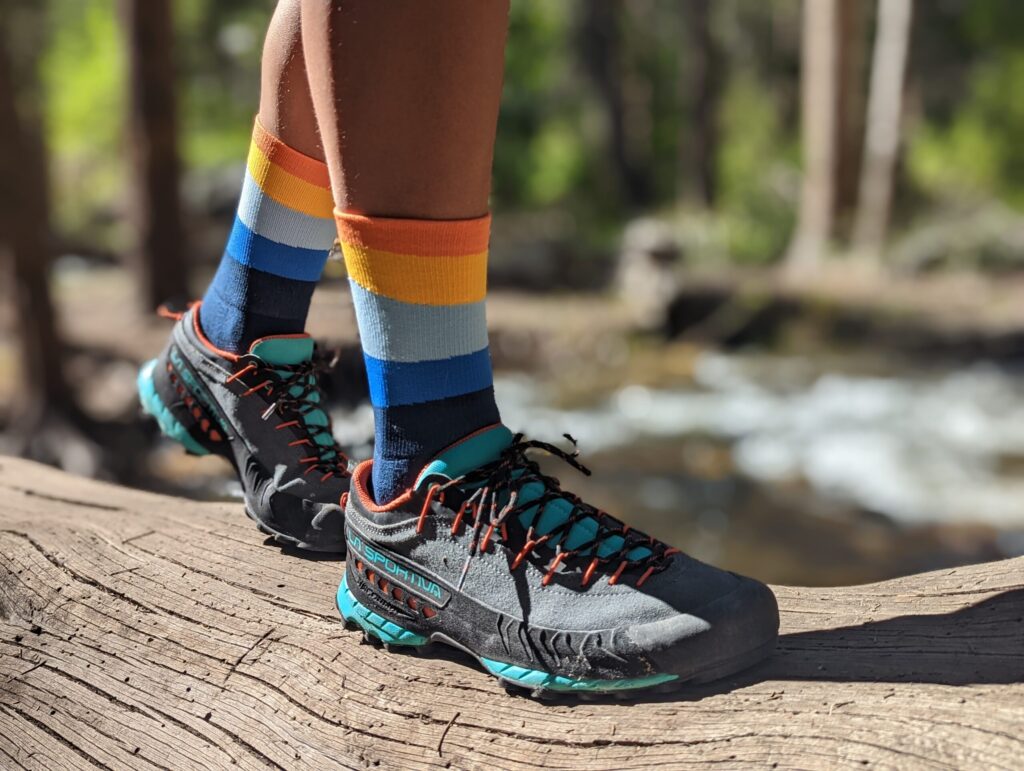The best material for socks depends upon their intended use. For active pursuits, it is advisable to opt for materials such as CoolMax® polyester, Merino wool, and synthetic blends (e.g., polyester with nylon and olefin). These materials are preferred for their excellent moisture-wicking capabilities and durability, making them ideal for enhancing comfort during physical activities.
Conversely, cotton is discouraged for active use because it tends to absorb sweat and dry slowly. This makes it a suboptimal choice, particularly for preventing blisters during physical exertion .
In colder climates, Merino wool stands out as an excellent choice. Not only does it offer superior temperature regulation, but its moisture-wicking properties make it well-suited for cold weather conditions [REI] [Tall Order] [Darn Tough].
In summary, the selection of the best sock material hinges on various factors, including moisture control, insulation, durability, and specific use cases
Which Sock Material is Best for Hiking?
The best material for hiking socks is wool, especially merino wool. It’s great because it keeps you warm or cool when needed, pulls away sweat, and lasts a long time. Wool also naturally fights bad smells. Some socks mix wool with other materials like polyester, nylon, or spandex to make them even stronger, comfier, and quicker to dry. Some socks even blend fine merino wool, nylon, and a bit of spandex to keep their shape. These mixed wool and synthetic socks work well for both hot and cold weather hikes, giving you the right amount of warmth, moisture control, and durability.
In short, picking the right material for your hiking socks is crucial to making sure your feet stay comfy and happy in different weather and terrains.
Best Hiking socks to prevent blisters?
Hiking exposes your feet to various conditions, making them susceptible to friction and moisture—the perfect recipe for blisters. Choosing the right socks is crucial to create a protective barrier between your feet and potential blister triggers.
Material Matters: Embracing Merino Wool
Merino wool is the star material for hiking socks. Known for its temperature-regulating properties, it keeps your feet warm in the cold and cool in the heat. With excellent moisture-wicking abilities, merino wool prevents that uncomfortable clammy feeling. It’s naturally antimicrobial, fighting against bacteria and keeping your socks fresh during extended treks. Look for socks blending fine merino wool with synthetic materials for enhanced durability and quick drying.
Finding the Perfect Blend: Wool/Synthetic Harmony
For the ideal balance between insulation, moisture control, and durability, opt for socks blending merino wool with synthetics like polyester, nylon, and spandex. These blends provide strength, elasticity, and shape retention—essential for preventing blisters.
Recommended Hiking Socks: A Blend of Comfort and Functionality
- REI’s Backpacking Socks: Crafted with a blend of merino wool and synthetics, ensuring optimal comfort, durability, and moisture management.
- Switchback Travel’s Top Picks: Explore their recommendations, emphasizing merino wool’s importance for blister prevention.
- Exploration Solo’s Guide: Gain insights into choosing the best hiking socks, focusing on materials for a blister-free experience.
- Camotrek’s FAQs: Find answers to FAQs about hiking socks at Camotrek, helping you make informed choices for your next adventure.
Conclusion: Happy Feet, Happy Hiking
In the quest to prevent blisters during your hiking adventures, the right choice of socks is paramount. Opt for a blend of merino wool and synthetic materials for a comfortable, blister-resistant experience on the trails. Explore the recommended hiking socks, embrace the natural properties of merino wool, and embark on your next adventure with happy, blister-free feet. Your feet will thank you!

